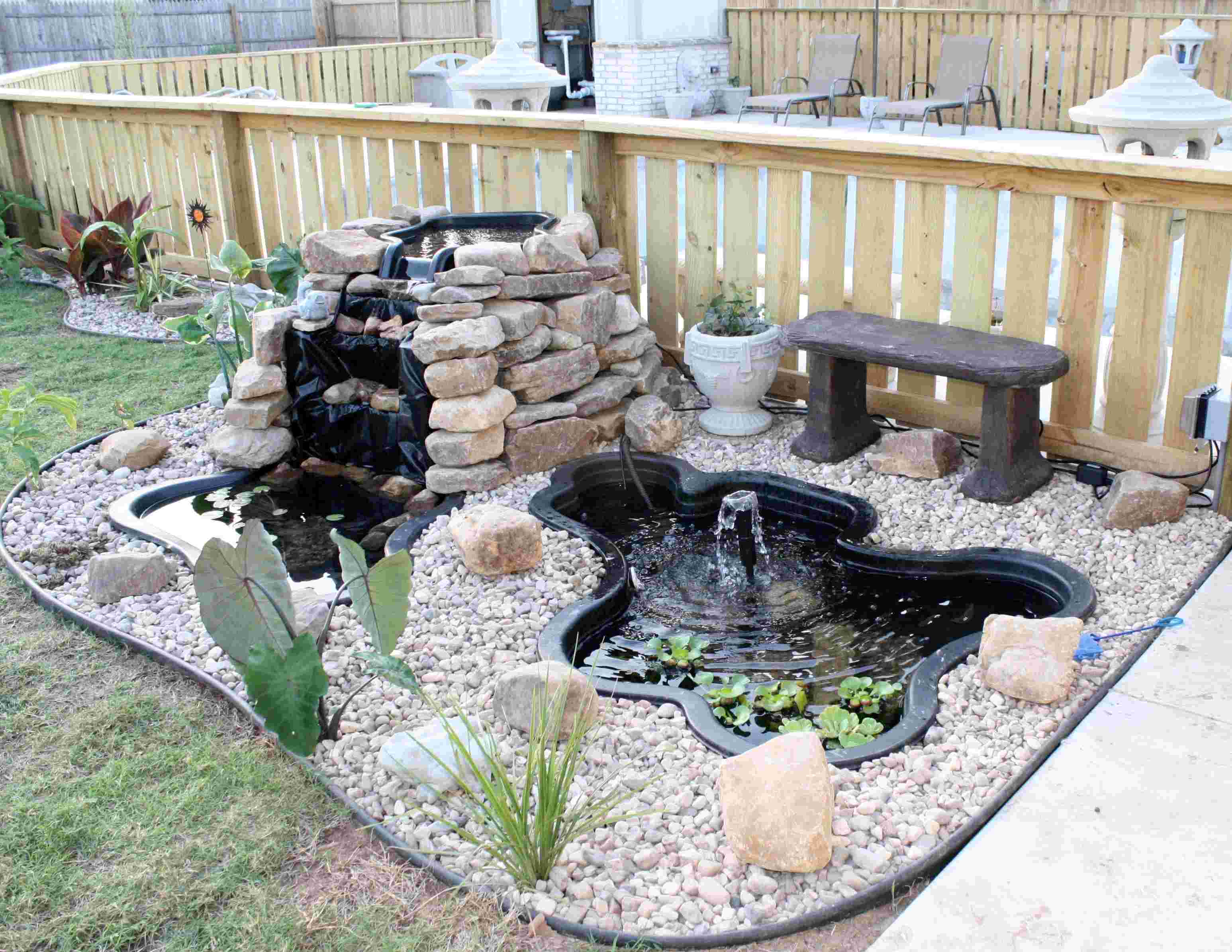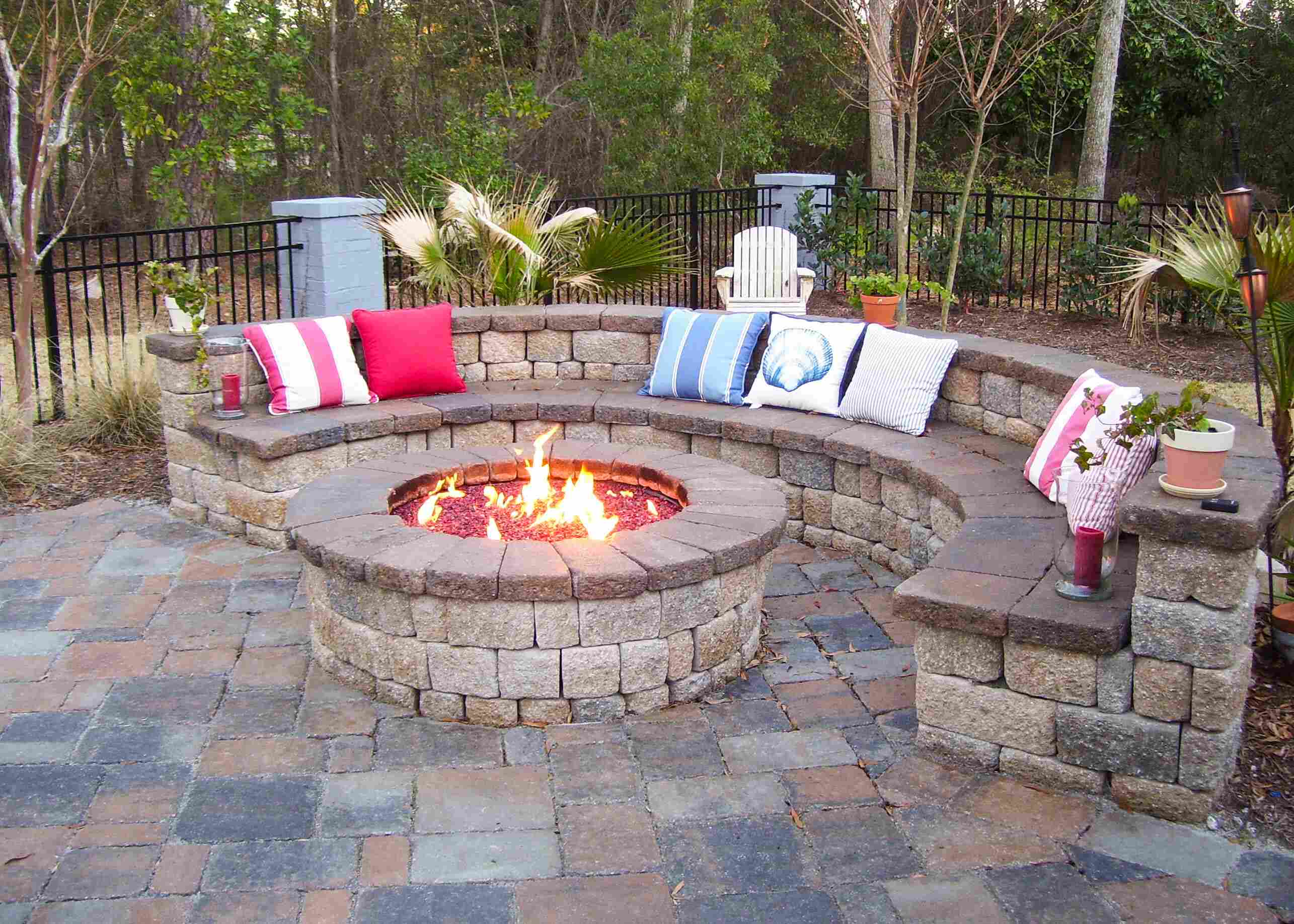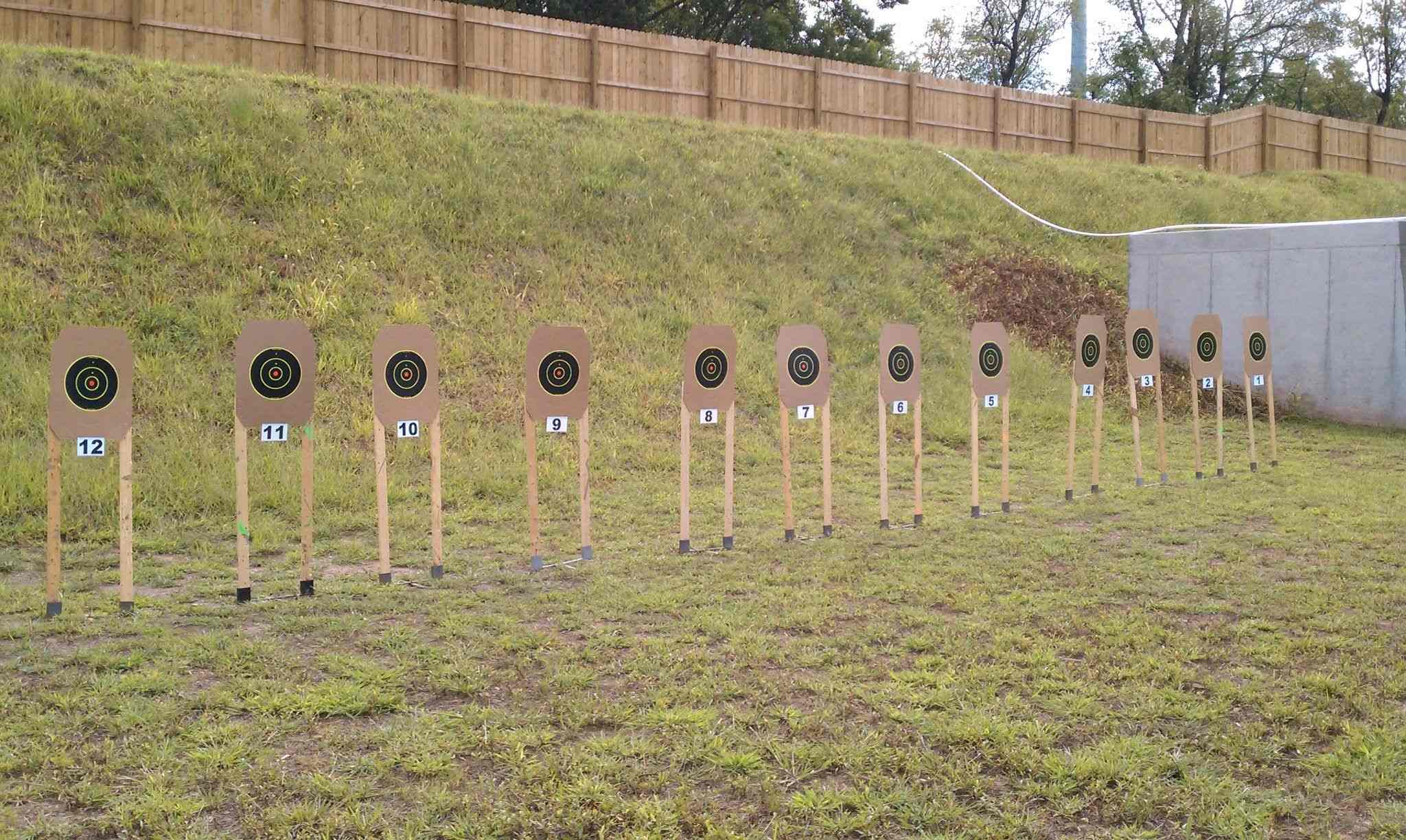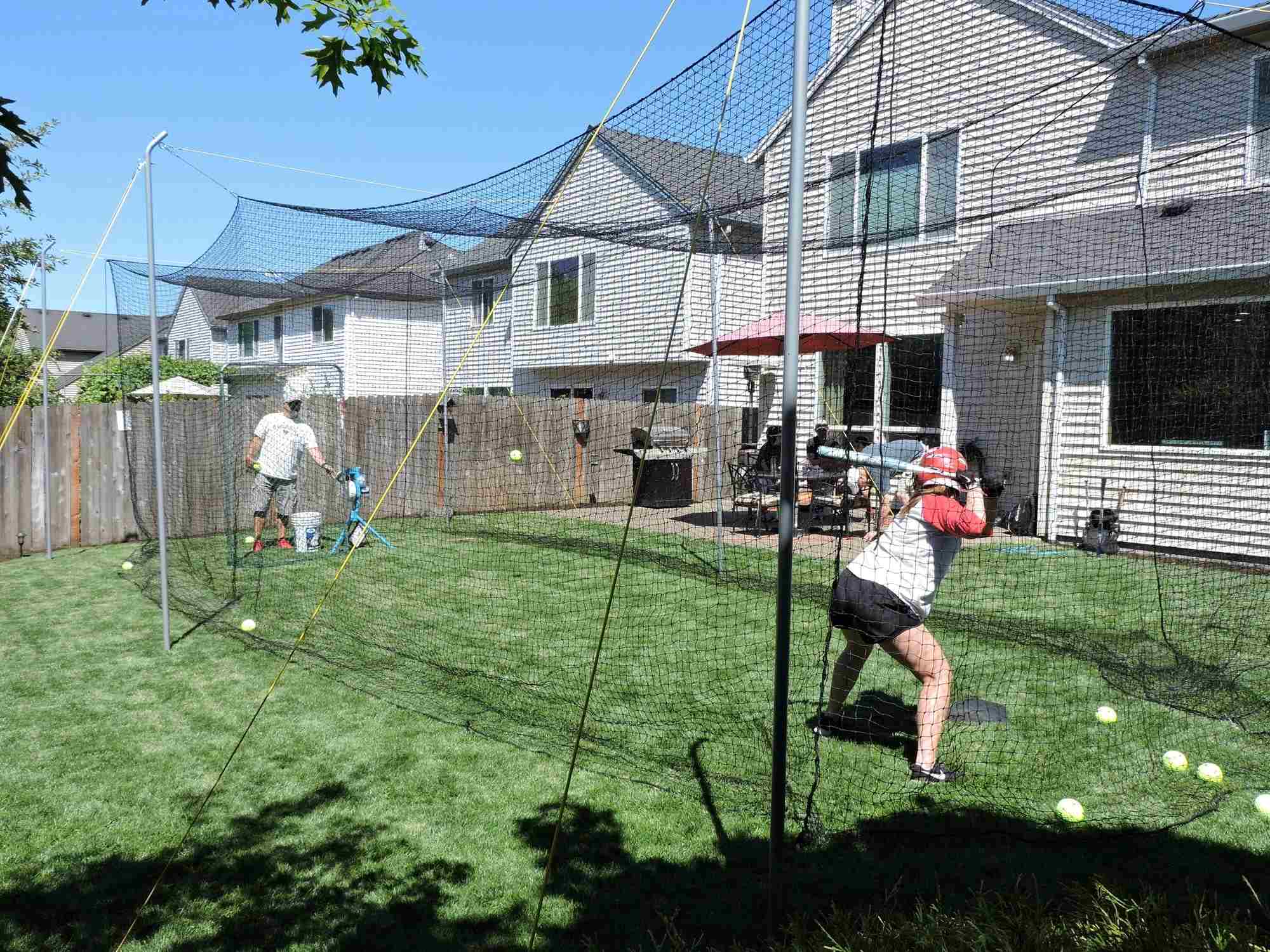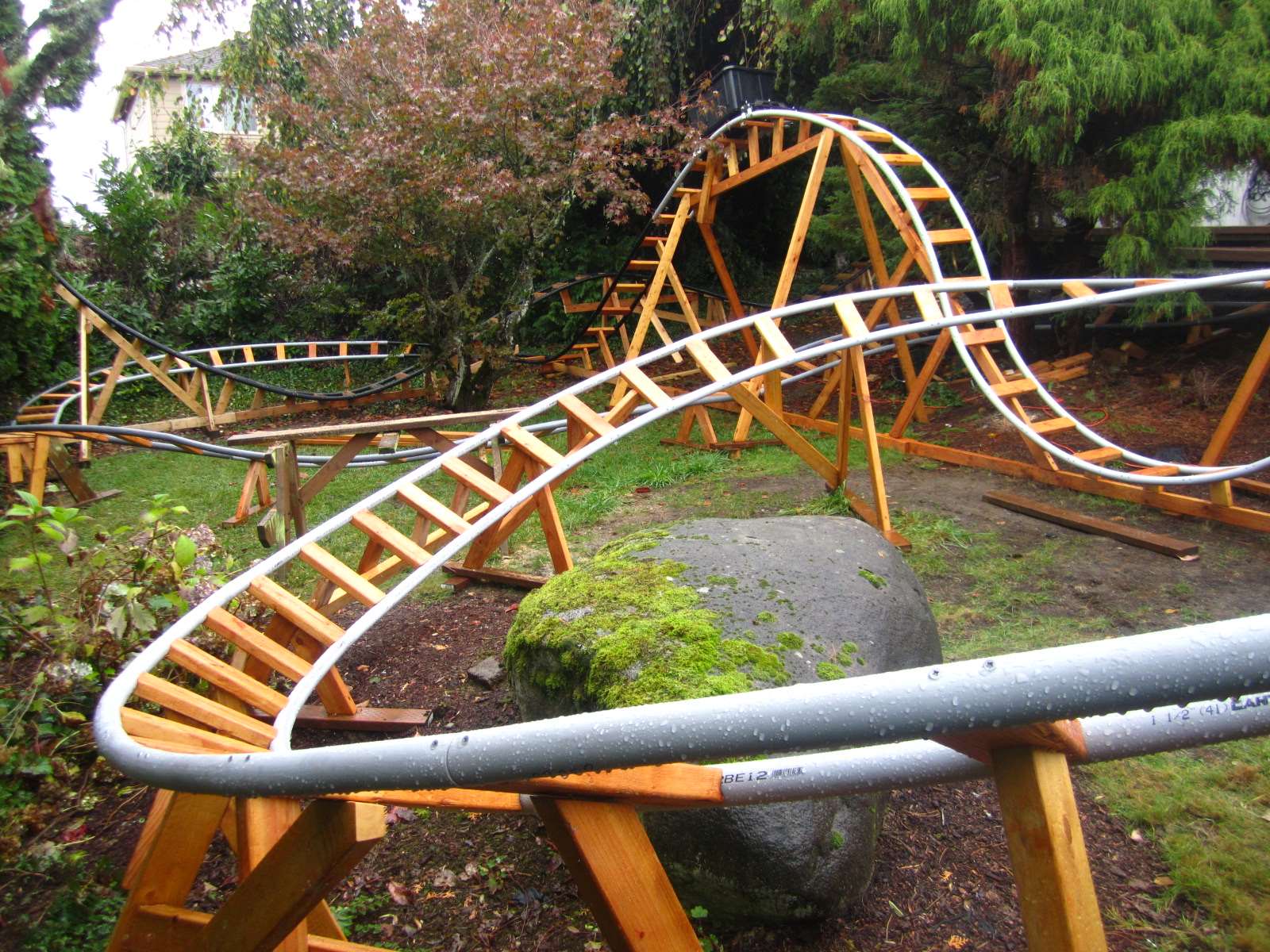Home>Gardening Techniques>DIY Projects>How To Get On Backyard Builds


DIY Projects
How To Get On Backyard Builds
Published: August 5, 2023
Learn how to tackle your DIY projects and transform your backyard with the help of Backyard Builds. Find inspiration, tips, and step-by-step guides in this ultimate guide.
(Many of the links in this article redirect to a specific reviewed product. Your purchase of these products through affiliate links helps to generate commission for Chicagolandgardening.com, at no extra cost. Learn more)
Table of Contents
- Introduction
- Step 1: Assess Your Backyard Space
- Step 2: Decide on the Purpose of Your Build
- Step 3: Create a Budget
- Step 4: Gather Inspiration and Ideas
- Step 5: Research and Obtain Permits, if Required
- Step 6: Hire a Professional or DIY?
- Step 7: Start Construction
- Step 8: Add Personal Touches and Decorations
- Step 9: Maintenance and Upkeep
- Conclusion
Introduction
Welcome to the world of backyard builds! If you’re looking to transform your outdoor space into a functional and beautiful area, you’ve come to the right place. Whether you’re a DIY enthusiast or prefer to hire professionals, this comprehensive guide will walk you through the steps to create your dream backyard project.
Backyard builds offer endless possibilities for creativity and customization. From simple projects like building a flower bed or a small patio, to more complex endeavors such as constructing a gazebo or an outdoor kitchen, the options are truly limitless. Not only do these projects add value to your property, but they also provide you with a personal oasis where you can relax, entertain, and enjoy the great outdoors.
Before diving headfirst into your backyard build, it’s essential to plan and prepare. This guide will take you through each step of the process, from assessing your backyard space and defining the purpose of your build, to obtaining necessary permits, selecting between a DIY approach or hiring professionals, and finally, adding personal touches to make your backyard truly unique. So, grab a cup of coffee, sit back, and let’s get started on your backyard transformation journey!
Step 1: Assess Your Backyard Space
The first step in any backyard build project is to assess your outdoor space. Take some time to carefully evaluate the size, layout, and existing features of your backyard. This will help you determine the potential and limitations of your project.
Start by measuring the dimensions of your backyard, including the length, width, and any irregular angles or corners. This will give you an accurate idea of the available space and help you visualize how your build will fit into the area.
Next, consider the topography of your backyard. Are there any slopes, hills, or uneven terrain that you need to take into account? This will be important when planning structures such as patios, decks, or retaining walls. It’s also essential to consider the drainage of your backyard to prevent any potential water issues in the future.
Another crucial aspect to assess is the sunlight exposure in your backyard. Observe how the sun moves throughout the day and identify areas that receive the most sunlight. This information will guide your decisions when it comes to planting gardens or placing seating areas, ensuring that you maximize the natural light in your outdoor space.
Additionally, take note of any existing features that you want to incorporate into your build. This may include trees, shrubs, or other landscaping elements. These features can be integrated seamlessly into your project, enhancing its overall aesthetic and creating a harmonious blend between the new and existing elements.
Lastly, consider any potential obstacles or limitations that may impact your backyard build. These could include underground utilities, such as gas, water, or electric lines, which need to be taken into account to avoid any issues during construction. It’s also crucial to research and comply with any local building codes or HOA restrictions that may affect your plans.
By thoroughly assessing your backyard space, you’ll have a clear understanding of its potential and limitations, allowing you to make informed decisions as you move forward with your project. So, grab a pen and paper, start mapping out your backyard, and let your imagination run wild with the endless possibilities that lie ahead!
Step 2: Decide on the Purpose of Your Build
Before diving into the details of your backyard build, it’s important to determine the purpose of your project. What do you envision using your outdoor space for? Clarifying the purpose will help guide your design choices and ensure that the final result fulfills your needs and desires.
Start by considering your lifestyle and how you plan to use your backyard. Are you looking to create a space for relaxation and tranquility, or do you envision an area for entertaining friends and family? Will you be hosting barbecues and gatherings, or do you prefer a quiet and private retreat?
Once you’ve identified the primary purpose of your build, you can begin to brainstorm specific features and elements that will enhance that purpose. For example, if you want a space for entertaining, you may want to incorporate a designated seating area, outdoor kitchen, or a fire pit. On the other hand, if relaxation is your goal, you may want to include a cozy lounge area, a water feature, or a meditation corner.
Consider any specific activities or hobbies that you enjoy and how they can be accommodated in your backyard build. Do you love gardening? Perhaps you can incorporate raised beds or a greenhouse. Are you an avid yoga practitioner? Maybe you can create a dedicated space for yoga and meditation. By aligning your build with your interests and hobbies, you’ll create a backyard space that brings you joy and enhances your well-being.
It’s also important to consider the needs of any family members or pets who will be using the backyard. Do you have kids who would benefit from a designated play area? Are there pets who need space to roam and explore? Taking these factors into account will ensure that your backyard is not only beautiful but also functional and practical for everyone in your household.
By deciding on the purpose of your build, you’ll have a clear vision and direction for your project. This will make the design and decision-making processes much smoother, allowing you to create a backyard space that perfectly suits your needs and reflects your personal style. So, take some time to envision the perfect backyard for you and start making plans to bring that vision to life!
Step 3: Create a Budget
Creating a budget is a crucial step in any backyard build project. It helps you determine how much you’re willing to spend and allows you to prioritize your expenses accordingly. By establishing a budget, you can make informed decisions and ensure that you stay within your financial means.
Start by assessing your overall financial situation and determining how much you can comfortably allocate towards your backyard build. Take into account any other ongoing expenses and commitments to ensure that you don’t overextend yourself financially.
Next, identify the key elements and features you want to include in your build. This could be anything from landscaping and hardscaping materials to furniture and decor. Research the average costs of these items and services to get an idea of how much you should allocate for each category.
It’s important to be realistic about your budget and to factor in any additional costs that may arise during the construction process. These could include unexpected expenses, permits fees, labor costs if you decide to hire professionals, or any necessary tools or equipment you may need.
Once you have a rough estimate of your expenses, prioritize them based on the most important elements of your backyard build. This will allow you to allocate your budget accordingly, ensuring that you invest in the aspects that matter the most to you.
Remember to set aside a contingency fund of around 10-20% of your total budget. This will serve as a safety net in case of any unexpected costs or design changes that may arise during the construction process.
Throughout your backyard build project, it’s important to keep track of your expenses and make adjustments as necessary. If you find that you’re exceeding your budget in certain areas, look for cost-effective alternatives or consider scaling back on certain features.
By creating a realistic budget and sticking to it, you’ll have a clear financial plan and peace of mind throughout the process. It will also help you avoid any financial stress and ensure that your backyard build remains an enjoyable and rewarding experience. So, grab a spreadsheet or a pen and paper, crunch the numbers, and get ready to bring your backyard dreams to life within your budget!
Step 4: Gather Inspiration and Ideas
Now that you have a clear understanding of your backyard space, the purpose of your build, and your budget, it’s time to gather inspiration and ideas for your project. This step will help you visualize the possibilities and narrow down the design elements that resonate with your style and preferences.
Start by exploring various sources of inspiration. Browse home improvement magazines, visit websites and blogs dedicated to outdoor living, and check out social media platforms like Instagram and Pinterest for a wide range of backyard design ideas. Save or bookmark any images or articles that catch your eye and appeal to your personal taste.
Consider the architectural style of your home and its surroundings. Look for designs that complement the existing aesthetics and blend seamlessly into the overall look and feel of your property. Whether you prefer a sleek and modern design, a rustic and natural ambiance, or something in between, finding inspiration that aligns with your desired style is key.
Take note of specific design elements that you find appealing. This could include the materials used, such as wood, stone, or concrete, as well as the colors, patterns, and textures that catch your attention. Pay attention to the layout and arrangement of outdoor furniture, planting schemes, and creative outdoor lighting solutions.
Don’t limit yourself to just one source of inspiration. Explore various design styles and gather ideas from different sources to create a unique and personalized blend in your backyard build. Look for innovative and creative solutions that make the most of your space and reflect your personality.
Consider creating a vision board or a digital folder where you can compile all of your collected inspiration. This will help you visualize the overall look and feel you want to achieve in your backyard. You can also use this collection of ideas when working with landscaping professionals or contractors to effectively communicate your vision.
Remember, while it’s great to gather inspiration from various sources, it’s important to tailor those ideas to fit your specific backyard space, budget, and needs. Take the time to curate your inspiration and select elements that are feasible and realistic for your project.
By gathering inspiration and ideas, you’ll have a clear vision of the design direction you want to take in your backyard build. This will serve as a foundation for the next steps in bringing your dream backyard to life. So, dive into the world of design inspiration and let your creativity soar!
Step 5: Research and Obtain Permits, if Required
Before you dive into your backyard build project, it’s important to research and determine if any permits are required for the work you plan to undertake. Building permits ensure that your project complies with local building codes and regulations, guaranteeing safety and adherence to zoning rules.
Start by contacting your local municipality or building department to inquire about the specific permits that may be necessary for your backyard build. Each jurisdiction may have different requirements, so it’s essential to clarify the regulations that apply to your property.
Provide detailed information about your project, including its scope, dimensions, and planned materials, to ensure accurate guidance from the building authority. They will inform you of the specific permits you need to obtain and guide you through the application process.
Some common backyard builds that may require permits include the construction of new structures like decks, patios, gazebos, and outdoor kitchens. Additionally, permits may be necessary for plumbing or electrical work, installing fencing, or making major changes to grading or drainage systems.
Once you have identified the permits you need, gather all the required documentation and complete the necessary application forms. This typically includes providing plans, diagrams, and specifications for your backyard build. Ensure that all the information is accurate and in compliance with the building codes, as incomplete or inaccurate documentation may lead to permit delays or rejections.
Submit your permit application and be prepared to pay any associated fees. The processing time may vary, so it’s best to apply well in advance of your planned construction start date. Keep in mind that inspections may be required at various stages of the project, so be prepared to schedule these appointments as needed.
Remember, obtaining the necessary permits is not only a legal requirement but also ensures that your backyard build is safe and meets the necessary standards. Non-compliance with building codes can result in fines and could even lead to difficulties if you decide to sell your property in the future.
By conducting thorough research and obtaining the required permits, you’ll have peace of mind knowing that your backyard build is not only beautiful but also compliant with local regulations. So, take the time to understand the permitting process and ensure that you start your project on the right foot!
Step 6: Hire a Professional or DIY?
One important decision to make when embarking on your backyard build project is whether to hire a professional or take the do-it-yourself (DIY) route. This decision depends on various factors, including your skill level, available time, budget, and the complexity of the project.
If you have the necessary skills, experience, and tools, tackling the project yourself can be a cost-effective option. It allows you to have full control over the design and execution, and it can be a rewarding experience to see your vision come to life with your own hands. DIY projects also offer an opportunity to learn new skills and gain a sense of accomplishment.
However, keep in mind that DIY projects require significant time and effort. You’ll need to invest time in research, planning, and acquiring the necessary knowledge and skills to complete the project successfully. Additionally, it’s essential to be honest with yourself about your capabilities and consider the complexity of the project. Some tasks, such as structural work or complex electrical and plumbing installations, may require professional expertise.
If you’re not confident in your DIY abilities or if the project is large-scale and complex, hiring a professional is a wise choice. Professional contractors and landscapers have the expertise, experience, and equipment necessary to execute your vision efficiently and to a high standard. They also have professional networks and access to quality materials, saving you time and potential headaches.
Before hiring professionals, do thorough research and collect multiple quotes from different contractors. Check their credentials, read reviews from past clients, and ask for samples of their previous work. Make sure they have proper licenses and insurance to protect both parties during the construction process.
Ultimately, the decision to hire a professional or take on the project yourself depends on your comfort level, budget, and the scale of the project. It’s important to weigh the pros and cons, consider your available resources, and choose the option that aligns best with your needs and capabilities.
Whether you decide to DIY or hire professionals, remember to maintain open communication and collaborate closely with the team involved. This will ensure that your backyard build turns out exactly as you envisioned, resulting in a space that you love and enjoy for years to come.
Step 7: Start Construction
Congratulations! You’ve reached the exciting stage of starting the construction of your backyard build. This step is where all your planning and preparation come to life as you transform your vision into a tangible reality. Keep these key considerations in mind as you begin the construction process.
First, gather all the necessary tools, materials, and equipment for the project. Make a checklist and ensure that you have everything you need before starting. This will help you stay organized and prevent unnecessary delays during construction.
Next, follow your design plans and start with the foundation or structural elements of your build. This could involve laying the groundwork, building retaining walls, or installing posts for pergolas or decks. Pay close attention to measurements, leveling, and ensuring the proper support and stability of your structures.
As you progress through the construction, be diligent about following safety guidelines. Wear appropriate protective gear, use tools properly, and take precautions to prevent accidents and injuries. If you’re working with electrical or plumbing components, consider consulting professionals to ensure compliance with safety standards.
Depending on the complexity of your project, you may need to call in professionals for certain tasks. For example, plumbing and electrical work may require certified experts. Don’t hesitate to seek help if needed to ensure quality workmanship and compliance with codes and regulations.
Throughout the construction process, maintain open communication with any contractors or professionals involved. Regularly inspect the work being done and address any concerns or issues promptly. Clear communication will help ensure that the construction aligns with your vision and minimize the chances of misunderstandings or mistakes.
Lastly, be patient and flexible. Construction projects can sometimes face unexpected challenges or delays, such as inclement weather or supply shortages. Maintain a positive mindset, adapt to any necessary changes, and keep your end goal in mind. The journey to your dream backyard may have a few bumps, but the end result will be worth it.
Remember to take breaks when needed and pace yourself to avoid burnout. Construction can be physically demanding, so listen to your body and prioritize self-care throughout the process.
With dedication, perseverance, and attention to detail, you’ll see your backyard build start to take shape. Embrace the construction phase as an exciting opportunity to bring your vision to life, and soon enough, you’ll have a beautiful and functional outdoor space to enjoy for years to come.
Step 8: Add Personal Touches and Decorations
As the construction phase of your backyard build comes to an end, it’s time to add the finishing touches and inject your unique personality into the space. This is the step where you can truly make your backyard your own by incorporating personal touches and decorations.
Start by considering the overall theme or style you want to achieve in your backyard. Whether it’s a cozy and rustic retreat or a sleek and modern oasis, select decor elements that align with your vision. Look for items such as outdoor furniture, cushions, rugs, and lighting fixtures that complement the aesthetic you desire.
Add greenery and landscaping to enhance the beauty and ambiance of your backyard. Plant flowers, shrubs, and trees that thrive in your climate and suit your preferences. Consider creating focal points, such as a flower bed or a garden sculpture, to add visual interest. Don’t forget to factor in the maintenance required for your chosen plants to ensure they thrive and remain healthy.
Incorporate decorative elements that reflect your personality and interests. Hang outdoor art, showcase unique sculptures or ornaments, or create a display of potted plants and flowers. Install a water feature, such as a fountain or a pond, to create a soothing and tranquil atmosphere.
Add functionality to your backyard by incorporating elements such as outdoor kitchens, fire pits, or built-in seating areas. These features not only enhance your enjoyment of the space but also provide opportunities for entertaining and hosting gatherings.
Consider the use of outdoor lighting to create a warm and inviting ambiance during the evenings. Install pathway lights, string lights, or even solar-powered lanterns to extend the usability of your backyard into the night.
Furthermore, don’t forget to incorporate elements that cater to the comfort of yourself and your guests. Consider adding shade structures, such as pergolas or umbrellas, for relief from the sun. Provide seating options with comfortable cushions or lounge chairs. Install an outdoor sound system or create a cozy nook for reading and relaxing.
Remember, the goal is to create an outdoor space that reflects your personal style and preferences. Don’t be afraid to experiment and get creative with your choices. Your backyard build is a reflection of you, so let your imagination guide you as you add those personal touches and decorations that make the space uniquely yours.
Once you’ve added the final touches, take a step back and admire your hard work. Your backyard now showcases your vision and creativity. It’s a space where you can relax, entertain, and create lasting memories with your loved ones.
So, embrace this step with enthusiasm and let your personal taste shine through as you put the final stamp of individuality on your backyard build.
Step 9: Maintenance and Upkeep
After completing your backyard build, the final step is to establish a maintenance routine to keep your outdoor space looking its best. Regular maintenance and proper upkeep will ensure that your backyard remains beautiful, functional, and enjoyable for years to come.
Start by creating a maintenance schedule that outlines the tasks and frequency of each. This can include tasks such as mowing the lawn, pruning plants, cleaning outdoor furniture, and inspecting for any repairs or maintenance needs.
Regularly water your plants to keep them healthy and vibrant. Consider investing in an efficient irrigation system or set reminders to water manually if needed. Adjust watering schedules based on the season and weather conditions.
Clear debris, fallen leaves, and any other unwanted materials from your backyard regularly. This will not only maintain cleanliness but also prevent potential damage to your outdoor surfaces and structures.
Inspect and clean your outdoor furniture regularly to keep them in good condition. Check for any signs of wear, rust, or damage, and repair or replace as necessary. Apply protective coatings or sealants to extend the lifespan of your furniture.
Pay attention to the condition of any hardscape elements, such as patios, decks, or pathways. Sweep or pressure wash these surfaces to keep them clean and remove any dirt or stains. Repair any cracks or damages promptly to prevent further deterioration.
Trim and prune plants as needed to maintain their shape and health. Remove any dead or diseased branches, and keep an eye out for signs of pests or diseases. Fertilize plants according to their specific needs to promote healthy growth.
Regularly check and maintain any outdoor lighting fixtures. Replace bulbs as needed and clean the fixtures to ensure they provide adequate illumination and enhance the ambiance of your backyard during the evenings.
Consider seasonal tasks to keep your backyard in top shape. This may include winterizing plants and outdoor plumbing fixtures, applying protective coverings, or adjusting your irrigation schedule to account for changes in weather conditions.
Finally, stay aware of any changes or issues that may arise in your backyard. Act promptly to address any problems, such as drainage issues, weed growth, or pest infestations. Regularly assess the condition of your backyard to catch any potential problems before they escalate.
By establishing a maintenance routine and staying proactive, you’ll ensure that your backyard build remains in excellent condition. Regular care and attention will preserve the beauty and functionality of your outdoor space, allowing you to continue enjoying it for years to come.
So, take the time to create a maintenance plan, allocate the necessary resources, and commit to the care of your backyard. Your efforts will pay off in a flourishing and well-maintained outdoor oasis.
Conclusion
Congratulations on completing your backyard build project! You’ve transformed your outdoor space into a beautiful and functional area that reflects your style and enhances your lifestyle. Through careful planning, assessing your backyard space, defining the purpose of your build, creating a budget, gathering inspiration, obtaining permits, choosing DIY or hiring professionals, starting construction, adding personal touches, and establishing a maintenance routine, you’ve embarked on an incredible journey of creating your dream backyard.
Remember, a backyard build is not just about aesthetics; it’s about creating a space that brings you joy, relaxation, and allows for cherished moments with family and friends. As you enjoy your newly built backyard, take the time to appreciate the hard work and dedication you’ve put into the project.
Continue to maintain and care for your backyard, adjusting and improving as needed over time. Let it evolve with your changing needs and preferences. Stay open to new ideas and inspirations, and don’t hesitate to make additional improvements or modifications in the future.
Lastly, take pride in what you’ve accomplished. Your backyard build is a testament to your creativity, resourcefulness, and commitment. It’s a space that reflects your personality and provides an escape from the hustle and bustle of daily life.
So go ahead, invite friends over for a gathering, indulge in quiet moments of relaxation, or enjoy a family barbecue in your newly created sanctuary. Your backyard build is now ready for you to make lasting memories and create a haven that you’ll cherish for years to come.
